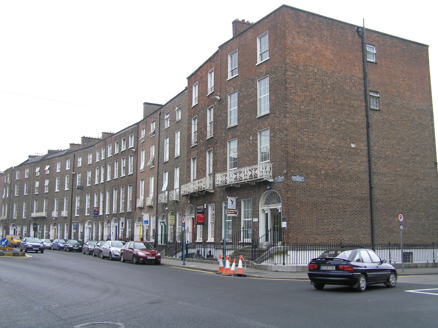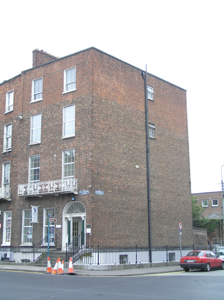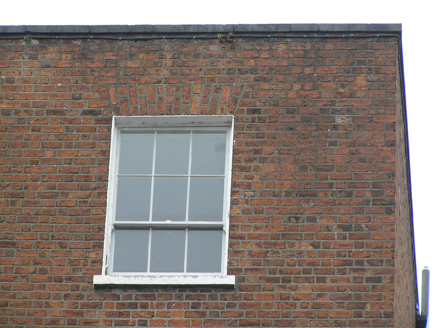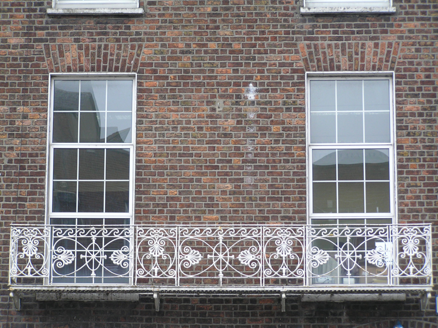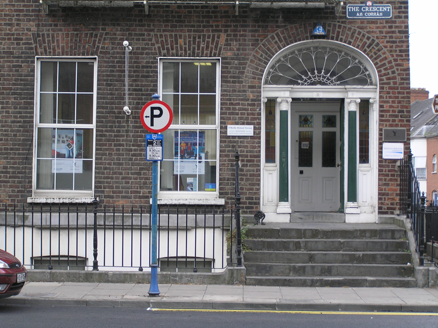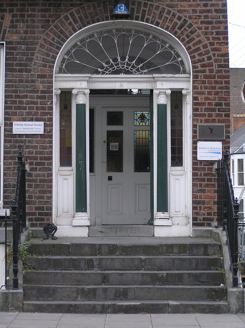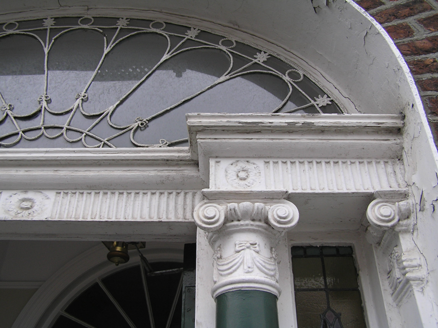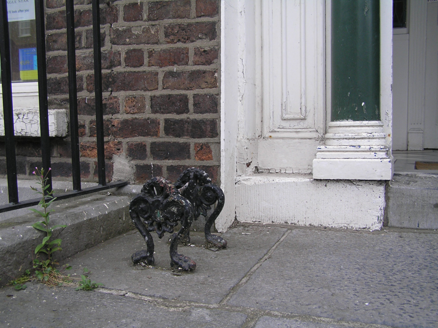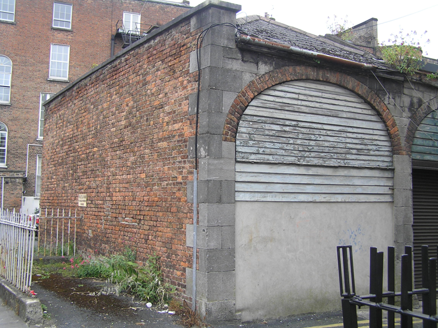Survey Data
Reg No
21517191
Rating
Regional
Categories of Special Interest
Architectural, Artistic
Original Use
House
In Use As
Office
Date
1800 - 1830
Coordinates
157299, 156515
Date Recorded
17/07/2005
Date Updated
--/--/--
Description
Corner-sited end-of-terrace two-bay four-storey over-basement red brick house, built c. 1820, forming one of a crescent of similarly scaled houses. Single-storey return to rear. M-profile roof concealed behind a parapet wall on all sides, with large red brick chimneystack to north party wall. Red brick façade, side and rear elevation walls laid in Flemish bond with cement re-pointing. Painted rendered basement elevations to all with limestone ashlar plinth course delineating ground floor level to façade and side elevation. Red brick square-headed window openings with patent rendered reveals, painted limestone sills and replacement three-over-six timber sash windows to third floor level, and uPVC windows elsewhere on façade. Adamesque cast-iron balcony with palmette motif supported on cast-iron brackets, at first floor level. Square-headed window openings to rear elevation with red brick arches, patent rendered reveals, limestone sills and replacement six-over-three timber sash windows to third floor level, uPVC windows to second floor level and round-arched stair hall window openings. Wyatt windows to ground and first floor level with original nine-over-six flanked by three-over two timber sash windows and six-over-six flanked by two-over-two timber sash windows each divided by timber mullions. Three-centred arch door opening, with red brick arch, rendered reveals, limestone threshold step, and inset doorcase comprising: three-quarters engaged Ionic columns and responding pilasters, each with swags to capitals, supporting fluted frieze with rosette detailing, breaking forward over orders; leaded coloured glass sidelights over panelled timber bases and flat-panelled timber door leaf with horizontal central panel; radiating petal shaped fanlight enriched by lead detailing. Opening onto limestone flagged front door platform with cast-iron bootscraper, arrived at by limestone steps. Steps and platform flanked by limestone plinth wall supporting original wrought-iron railings with spearhead finials and cast-iron rail posts with pineapple finials, which return around south-facing side elevation to enclose the stone flagged basement area which is accessed by metal steps to the southeast. Railings extend eastwards to enclose the rear site. Fine coach house to rear site access lane forming one of a row of similarly designed coach houses, with limestone ashlar entrance elevation, red brick south-facing side elevation laid in Flemish bond with limestone quoins and coping to parapet wall. Hipped artificial slate roof with clay ridge tiles and metal rainwater goods; red brick three-centred carriage arch rising from limestone ashlar piers, with plank timber lining above block-up lower section.
Appraisal
This house forms the pivotal end-of-terrace book-end house to terminate the south side of the east crescent on O'Connell Street. Despite the loss of some original timber sash windows, the house manages to express through its large scale and overwhelmingly strict massing, the nobility of the Georgian Newtown Pery buildings. The survival of the coach houses to the rear site access lane is vital to a complete and thorough understanding of the house, terrace and historic residential district within Limerick City.
